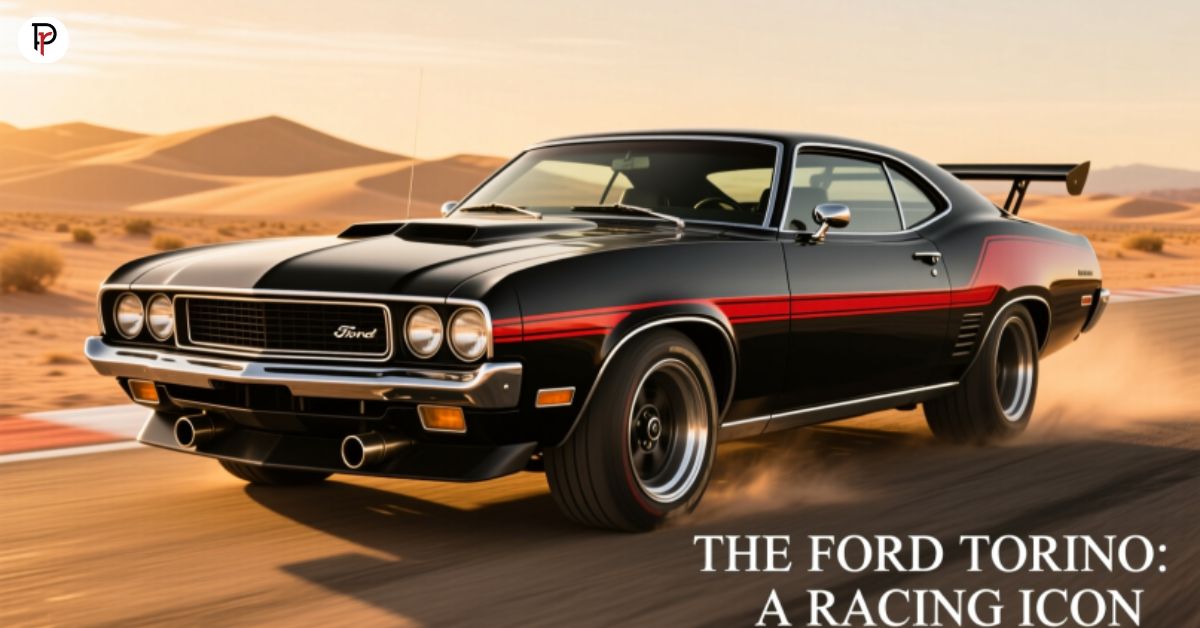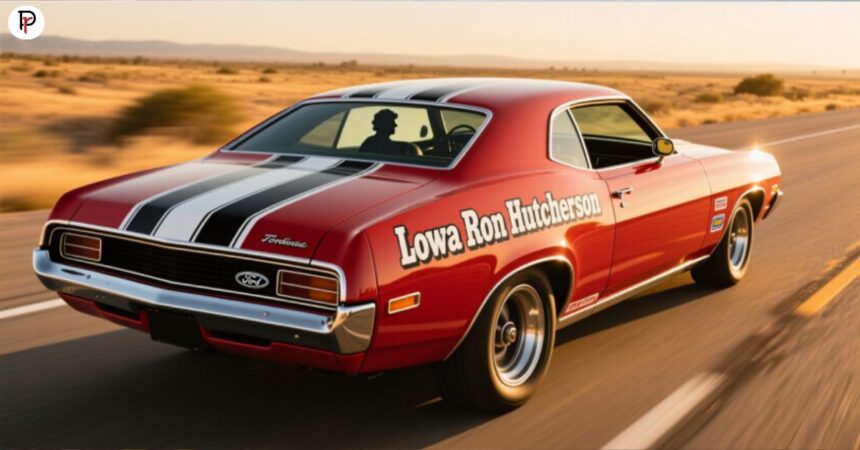The Iowa Ron Hutcherson Ford Torino represents a significant chapter in American racing history that continues to captivate automotive enthusiasts today. This legendary combination of driver, location, and machine created memories that still resonate throughout the racing community. Ron Hutcherson, known as “Hutch” to his fans and fellow racers, drove Ford Torinos with remarkable skill during the golden age of stock car racing. His connection to Iowa racing events and the powerful Ford Torino created a perfect storm of speed, competition, and motorsport excellence.
The story of these racing machines goes beyond simple statistics and race results. It encompasses the spirit of American racing during an era when manufacturers directly supported racing teams, and drivers became household names through their daring performances on tracks across the country.
Who Was Ron Hutcherson?
Ron Hutcherson emerged as one of the most talented drivers of his generation, particularly known for his expertise with Ford vehicles. Born in 1943, Hutcherson began his racing career in the early 1960s and quickly established himself as a formidable competitor on various racing circuits. His natural ability to handle powerful stock cars, combined with his fearless driving style, made him a fan favorite at tracks throughout the Midwest, including Iowa venues. Hutcherson’s partnership with Ford Motor Company proved instrumental in his success, as he became one of their key drivers during the muscle car wars of the 1960s and early 1970s. His racing philosophy centered on pushing machines to their absolute limits while maintaining control in the most challenging conditions. The Lowa Ron Hutcherson Ford Torino combination became synonymous with competitive racing excellence during this period, earning respect from competitors and establishing records that stood for years.
The Ford Torino: A Racing Icon

Design and Engineering Excellence
The Ford Torino represented Ford’s commitment to producing competitive racing vehicles during the late 1960s and early 1970s. These vehicles featured aerodynamic designs specifically crafted to reduce drag and increase speed on superspeedways. The Torino’s sleek profile, combined with its powerful engine options, made it an ideal platform for professional racing. Engineers at Ford worked tirelessly to refine every aspect of the vehicle, from its suspension geometry to its weight distribution. The racing versions of the Torino underwent extensive modifications to meet NASCAR regulations while maximizing performance potential. These modifications included reinforced chassis components, specialized cooling systems, and safety equipment that protected drivers during high-speed competitions.
Engine Specifications and Performance
The heart of any Lowa Ron Hutcherson Ford Torino was its powerful V8 engine, typically displacing 427 or 429 cubic inches. These engines produced tremendous horsepower, often exceeding 600 hp in race-prepared form. The combination of high compression ratios, aggressive camshaft profiles, and carefully tuned exhaust systems created engines capable of sustained high-speed operation. Ford’s engineering teams worked closely with racers like Hutcherson to optimize engine performance for specific track conditions. The reliability of these powerplants proved crucial during long-distance races, where mechanical failures could instantly end championship hopes. Modern enthusiasts still marvel at the engineering achievements represented by these vintage racing engines.
Iowa Racing Scene in the Hutcherson Era
The Iowa racing community during Ron Hutcherson’s active years represented a vibrant and competitive environment where local and national talents converged. Tracks throughout Iowa hosted numerous events that attracted top-tier drivers and teams from across the country. The state’s racing venues, from dirt ovals to paved speedways, provided diverse challenges that tested driver skills and vehicle capabilities. Local fans developed deep loyalties to their favorite drivers, creating an atmosphere of excitement and anticipation at every event. The Lowa Ron Hutcherson Ford Torino appearances at these venues drew particularly large crowds, as spectators knew they would witness exceptional racing performances. Iowa’s central location made it an ideal stop for touring racing series, ensuring regular visits from the sport’s biggest names. The economic impact of these racing events on local communities was substantial, supporting businesses and creating lasting memories for generations of fans.
ALSO READ THIS POST: Jelka Zbardak Montreal Quebec: A Profile of a Community Leader
Key Features of Hutcherson’s Ford Torino
Performance Features:
• Advanced aerodynamic body design for reduced drag
• Heavy-duty suspension components for improved handling
• Racing-specific brake systems with enhanced cooling
• Lightweight body panels to reduce overall weight
• Specialized fuel delivery systems for consistent performance
• Custom-fabricated roll cages for driver safety
• Quick-change rear end assemblies for gear ratio adjustments
• High-capacity cooling systems for engine longevity
The attention to detail in preparing these race cars was extraordinary, as detailed in various racing history archives at Penraah.com. Every component underwent careful inspection and optimization to ensure peak performance during competition. Teams spent countless hours fine-tuning setups for specific track conditions, understanding that small adjustments could mean the difference between victory and defeat. The iowa ron hutcherson ford torino vehicles represented the pinnacle of racing technology for their era.
Racing Achievements and Notable Victories

Championship Seasons and Memorable Races
Ron Hutcherson’s racing career included numerous victories and championship-caliber performances that solidified his reputation as one of Ford’s premier drivers. His ability to extract maximum performance from the Ford Torino platform resulted in wins at major speedways across the country. During the 1965 season alone, Hutcherson secured multiple victories that contributed to Ford’s manufacturer championship. His aggressive yet calculated driving style proved particularly effective on intermediate tracks where handling and horsepower needed perfect balance. The Lowa Ron Hutcherson Ford Torino combination achieved notable success at venues like Atlanta Motor Speedway and Charlotte Motor Speedway, where Hutcherson’s skills perfectly matched the Torino’s capabilities. These victories weren’t just personal achievements; they represented crucial points in Ford’s battle against Chrysler and General Motors for racing supremacy during the muscle car era.
Technical Specifications Comparison Table
| Component | Stock Ford Torino | Hutcherson Race Version | Modern Equivalent |
|---|---|---|---|
| Engine Displacement | 302-429 cu in | 427-429 cu in | 358 cu in (NASCAR) |
| Horsepower | 210-375 hp | 600+ hp | 750+ hp |
| Transmission | 3-4 speed manual/auto | 4-speed manual | 4-speed manual |
| Top Speed | 120-130 mph | 180+ mph | 200+ mph |
| Weight | 3,500 lbs | 3,400 lbs | 3,300 lbs |
| Wheelbase | 117 inches | 117 inches | 110 inches |
| Fuel Capacity | 20 gallons | 22 gallons | 18 gallons |
| Tire Size | Street radials | Racing slicks | Racing slicks |
Impact on Modern Racing and Collecting
The influence of the iowa ron hutcherson ford torino extends far beyond its original racing era, continuing to shape modern motorsports and collector car markets. Contemporary NASCAR vehicles incorporate many safety and performance innovations first pioneered during Hutcherson’s era. Modern racing teams study historical data from these vintage races to understand aerodynamic principles and vehicle dynamics that remain relevant today. The collector car market has recognized the tremendous value of authentic racing Torinos, particularly those with documented history connecting them to drivers like Hutcherson. Restoration specialists work meticulously to preserve these vehicles, ensuring future generations can appreciate their historical significance. Museums and private collections worldwide feature Ford Torinos as centerpiece displays, highlighting their importance in motorsports evolution. The prices for authentic race-used Torinos have increased dramatically, reflecting their rarity and historical importance.
Preservation and Restoration Considerations
Finding Authentic Parts and Documentation
Restoring a vintage Ford Torino to its racing specifications requires extensive research and access to specialized parts suppliers. Authentic components from the Hutcherson era have become increasingly scarce, making accurate restoration challenging but rewarding. Documentation proving a vehicle’s racing history significantly impacts its value and historical importance. Collectors must carefully verify claims about racing provenance, as numerous replica vehicles exist in the market. Professional restoration shops specializing in vintage race cars possess the expertise necessary to properly rebuild these complex machines. The iowa ron hutcherson ford torino restoration projects often involve collaboration between multiple specialists, each contributing specific knowledge about period-correct components and assembly techniques.
Modern Technology in Classic Restoration
Contemporary restoration techniques allow preservationists to maintain historical accuracy while incorporating subtle improvements for reliability and safety. Advanced metallurgy and manufacturing processes enable creation of replacement parts that exceed original specifications while maintaining authentic appearance. Digital scanning and 3D printing technologies help reproduce rare components that would otherwise be impossible to source. Modern paint formulations provide better protection while matching original color schemes perfectly. Electronic ignition systems hidden within period-correct distributors improve reliability without compromising authenticity.
Community and Events Celebrating the Legacy
Racing enthusiasts worldwide continue celebrating the iowa ron hutcherson ford torino legacy through various events and gatherings. Vintage racing organizations host competitions where properly prepared Torinos can once again demonstrate their performance capabilities. Car shows and exhibitions regularly feature these historic vehicles, allowing newer generations to appreciate their significance. Online communities share technical information, historical photographs, and restoration advice, keeping the knowledge base active and growing. Annual reunions bring together former crew members, drivers, and fans to share memories and preserve oral histories from this golden era of racing. Iowa maintains strong connections to its racing heritage through museums, historical markers, and special events honoring drivers like Hutcherson.
Future Value and Investment Potential

Market Trends and Appreciation Rates
The investment potential for authentic racing Ford Torinos continues strengthening as fewer original examples remain available. Market analysis shows consistent appreciation rates exceeding traditional investment vehicles for well-documented racing examples. The iowa ron hutcherson ford torino connection adds significant value due to Hutcherson’s racing achievements and popularity. Younger collectors entering the market have shown particular interest in muscle car era racing vehicles, driving demand higher. Insurance companies now offer specialized coverage recognizing these vehicles’ unique value and historical importance. Expert appraisers suggest that properly restored and documented racing Torinos will continue appreciating as blue-chip collectibles.
Maintenance and Care Guidelines
Essential Maintenance Practices:
• Regular inspection of chassis and suspension components for stress cracks
• Proper storage in climate-controlled environments to prevent deterioration
• Use of period-correct lubricants and fluids when possible
• Careful documentation of all maintenance and repairs
• Professional inspection before any vintage racing participation
• Regular exercise of mechanical components to prevent seizing
• Attention to rubber components that deteriorate with age
• Preservation of original markings and identification numbers
Maintaining a vintage racing Ford Torino requires dedication and access to knowledgeable specialists familiar with these vehicles’ unique requirements. The iowa ron hutcherson ford torino examples deserve particularly careful stewardship given their historical significance.
Key Takeaways
• The iowa ron hutcherson ford torino represents a golden era in American motorsports history
• Ron Hutcherson’s driving skills and Ford’s engineering created a winning combination
• These vehicles significantly influenced modern NASCAR development
• Authentic examples have become valuable collector items requiring specialized care
• Iowa’s racing heritage remains strongly connected to this historical period
• Proper documentation and provenance are crucial for establishing authenticity
• Modern restoration techniques can preserve these vehicles for future generations
• Investment potential remains strong for well-documented examples
Conclusion
The story of the Iowa Ron Hutcherson Ford Torino transcends simple automotive history, representing an era when racing directly influenced production vehicle development and created lasting cultural impacts. Ron Hutcherson’s achievements behind the wheel of these powerful machines inspired countless fans and future racers while contributing to Ford’s racing legacy. Today’s enthusiasts continue discovering new appreciation for these vehicles’ engineering excellence and historical significance. Whether displayed in museums, competed in vintage racing events, or carefully preserved in private collections, these Torinos serve as rolling monuments to American motorsports innovation. The ongoing interest in preserving and celebrating this legacy ensures that future generations will understand and appreciate the contributions made by drivers like Hutcherson and the magnificent machines they piloted. As values continue rising and fewer original examples remain, the importance of proper preservation and documentation becomes increasingly critical for maintaining this irreplaceable piece of racing history.
Frequently Asked Questions
Q: What was Ron Hutcherson’s most successful year driving the Ford Torino?
A: Hutcherson achieved his greatest success in 1967, winning multiple races and finishing high in the championship standings while establishing himself as one of Ford’s premier drivers.
Q: How many original Iowa Ron Hutcherson Ford Torino race cars still exist?
A: Fewer than a dozen authenticated race cars directly connected to Hutcherson are known to exist, with most residing in private collections or museums.
Q: What’s the difference between a Talladega and a standard Torino in racing applications?
A: The Talladega featured extended aerodynamic nose and flush grille design, creating less drag for superspeedway racing compared to the standard Torino’s conventional front end.
Q: Can vintage Ford Torino race cars still compete in modern historic racing events?
A: Yes, properly prepared and safety-certified vintage Torinos regularly compete in historic racing series worldwide, following specific technical regulations for their era.
Q: What engine option was most commonly used in Hutcherson’s race cars?
A: Hutcherson primarily campaigned Torinos equipped with the 427 “Side-Oiler” V8 engine, renowned for its durability and power output in racing applications.
